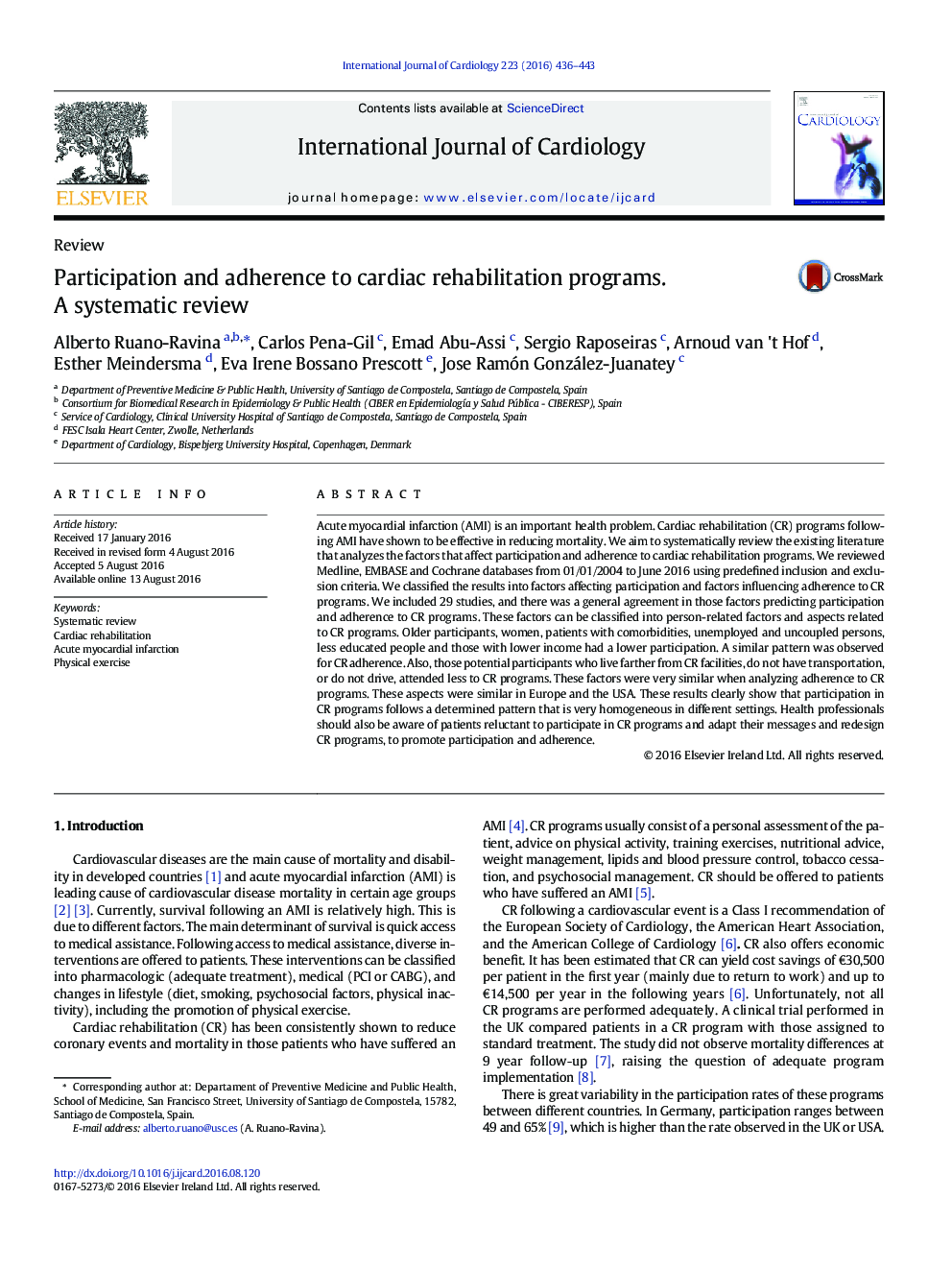| Article ID | Journal | Published Year | Pages | File Type |
|---|---|---|---|---|
| 5963071 | International Journal of Cardiology | 2016 | 8 Pages |
â¢Participation and adherence to cardiac rehabilitation programs is low despite its effectiveness.â¢Participation follows a determined pattern that is very homogeneous everywhere.â¢The most frequent variables affecting participation are age, gender and retirement.â¢Clinicians should know which patients are more reluctant to participate in CR programs.
Acute myocardial infarction (AMI) is an important health problem. Cardiac rehabilitation (CR) programs following AMI have shown to be effective in reducing mortality. We aim to systematically review the existing literature that analyzes the factors that affect participation and adherence to cardiac rehabilitation programs. We reviewed Medline, EMBASE and Cochrane databases from 01/01/2004 to June 2016 using predefined inclusion and exclusion criteria. We classified the results into factors affecting participation and factors influencing adherence to CR programs. We included 29 studies, and there was a general agreement in those factors predicting participation and adherence to CR programs. These factors can be classified into person-related factors and aspects related to CR programs. Older participants, women, patients with comorbidities, unemployed and uncoupled persons, less educated people and those with lower income had a lower participation. A similar pattern was observed for CR adherence. Also, those potential participants who live farther from CR facilities, do not have transportation, or do not drive, attended less to CR programs. These factors were very similar when analyzing adherence to CR programs. These aspects were similar in Europe and the USA. These results clearly show that participation in CR programs follows a determined pattern that is very homogeneous in different settings. Health professionals should also be aware of patients reluctant to participate in CR programs and adapt their messages and redesign CR programs, to promote participation and adherence.
